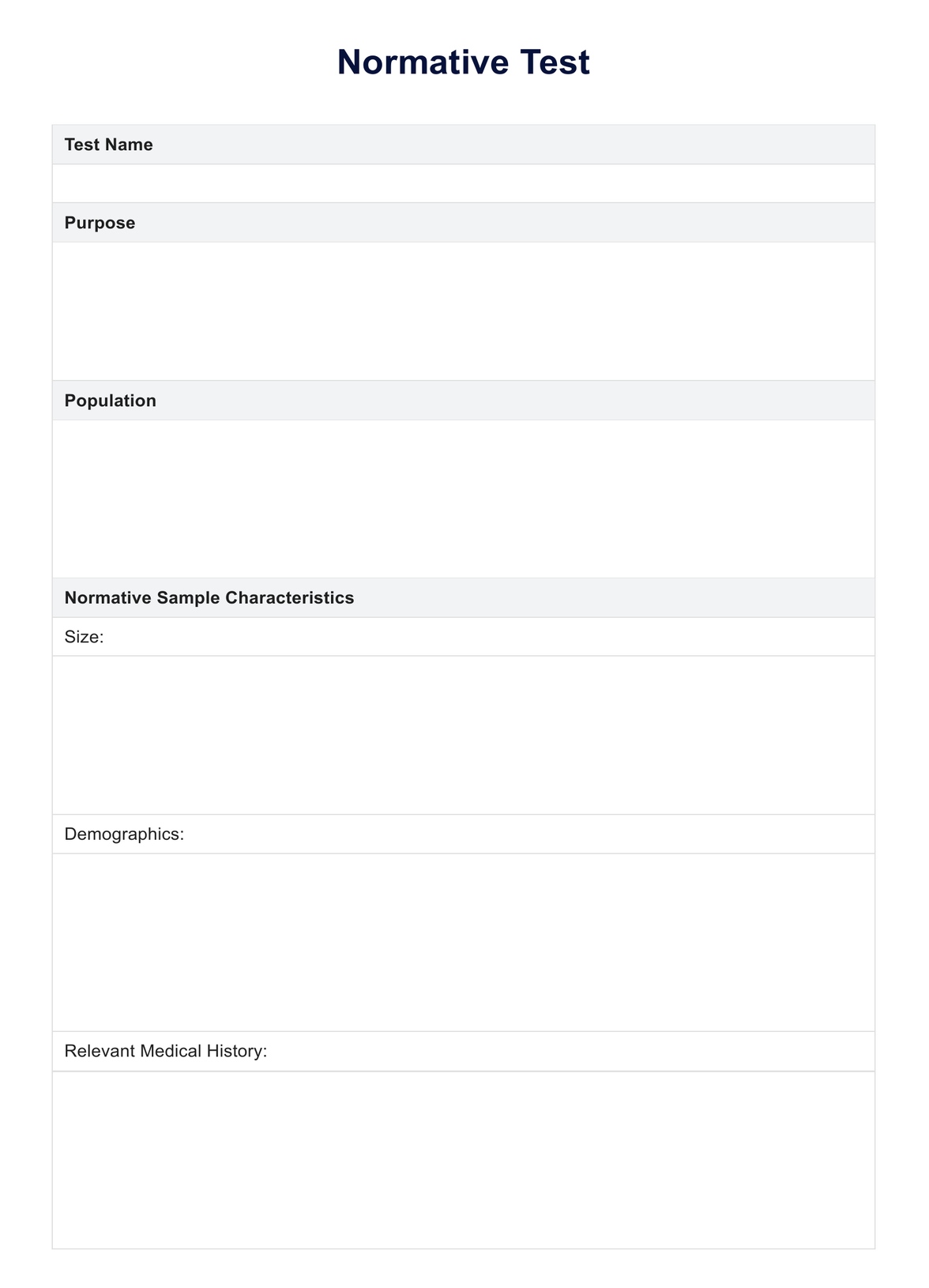Normative test examples refer to standardized assessments that compare an individual's performance against a normative sample, typically representing the average performance within a specific population.

Discover the essence of normative testing in a concise guide exploring its principles, significance, and applications.
Normative test examples refer to standardized assessments that compare an individual's performance against a normative sample, typically representing the average performance within a specific population.
In testing, the term "normative" refers to establishing a standard or benchmark based on the average performance of a specific group or population. Normative data allows for individual performance comparisons relative to the established standard.
Users can customize assessment templates on Carepatron to accommodate different testing needs or preferences. Standardized templates ensure consistency in test administration and accurate comparisons of test results across individuals or settings.
EHR and practice management software
*No credit card required
Free
$0/usd
Unlimited clients
Telehealth
1GB of storage
Client portal text
Automated billing and online payments